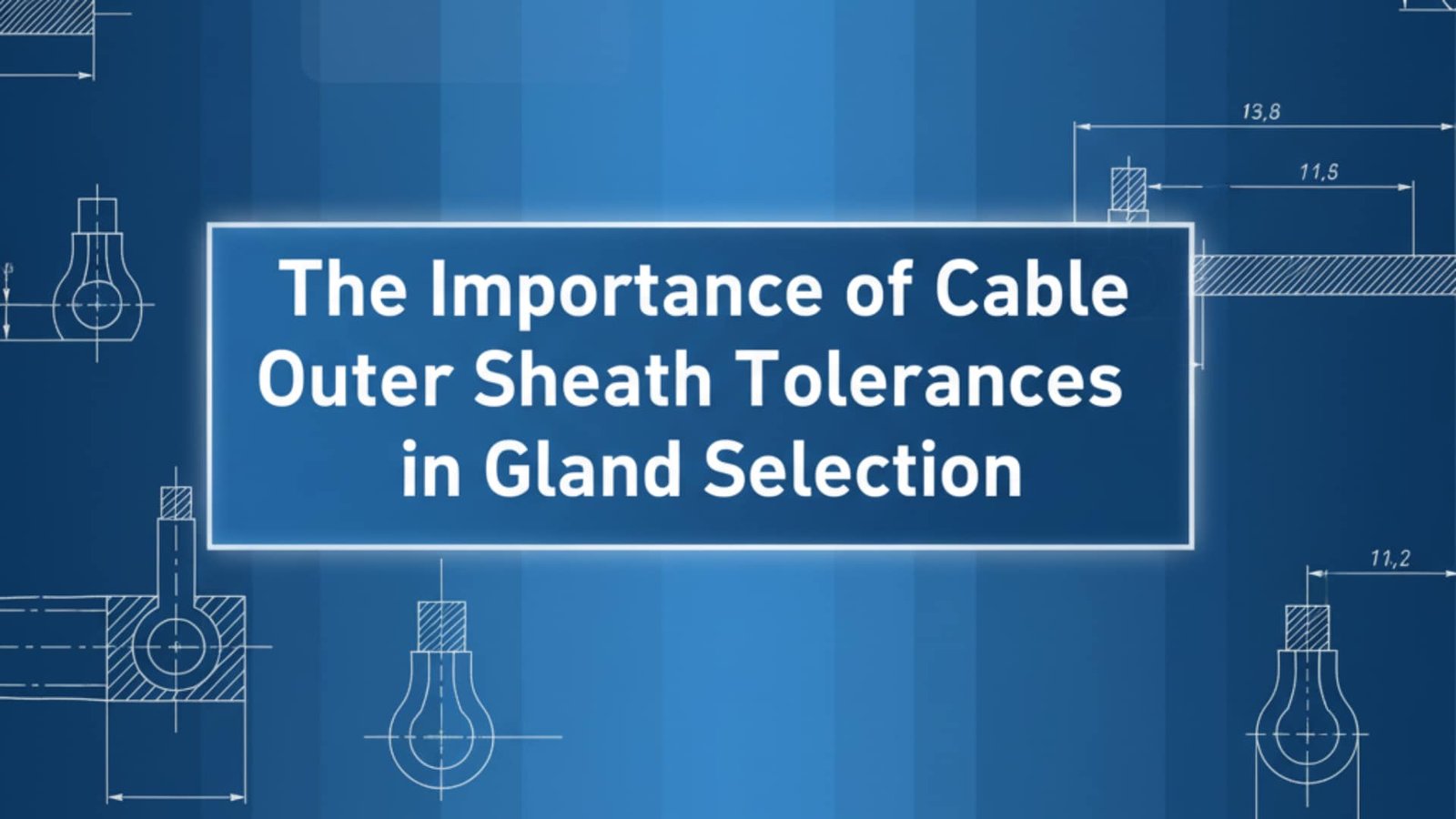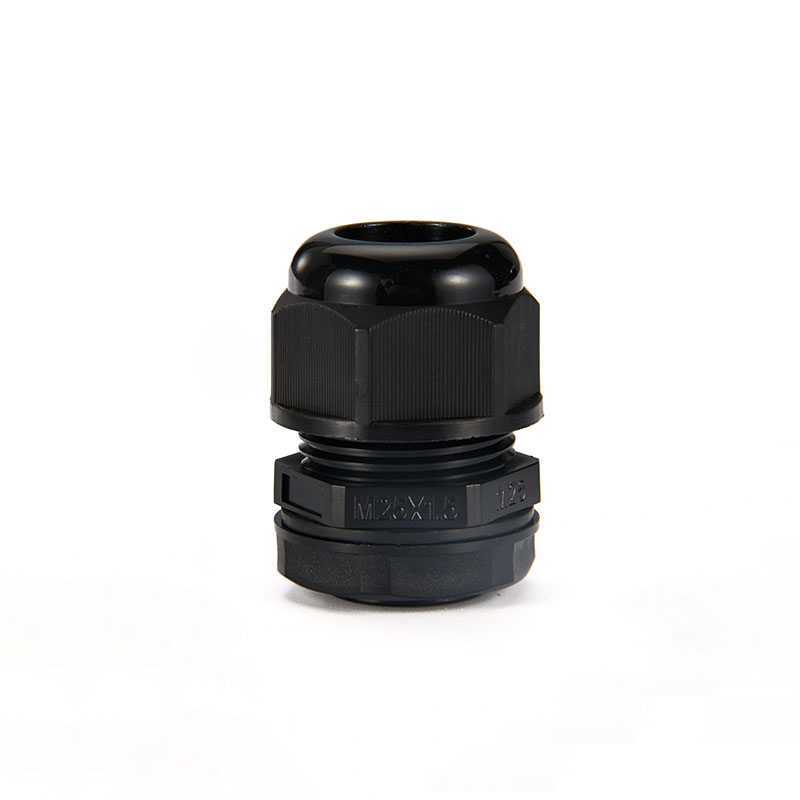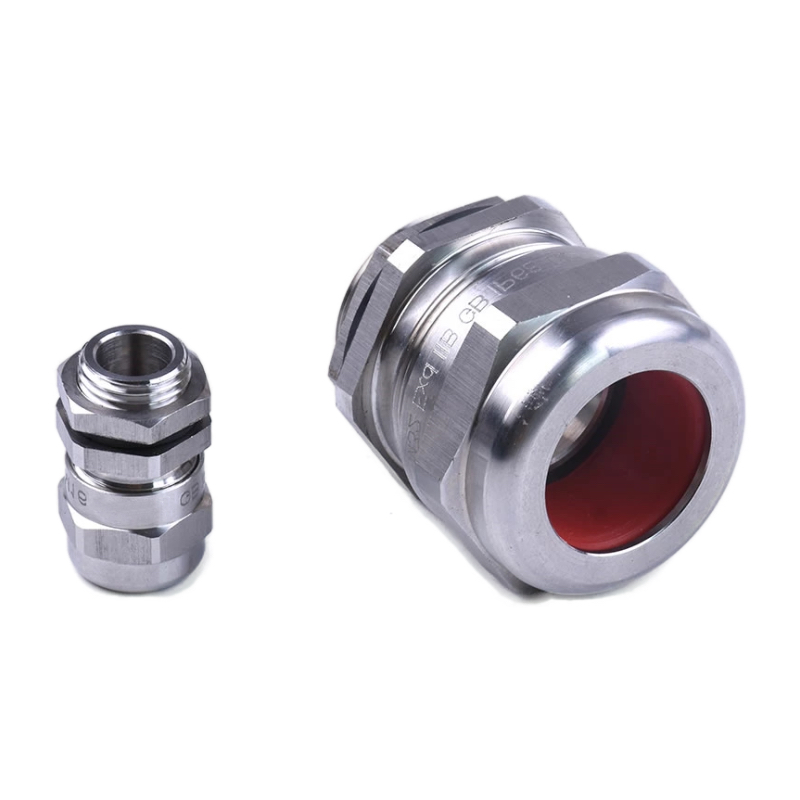Getting cable gland selection wrong can cost you thousands in rework, project delays, and potential safety hazards. Yet many engineers overlook one critical factor that determines success or failure: cable outer sheath tolerances.
The cable outer sheath tolerance directly determines proper gland fit, sealing integrity, and long-term reliability. Understanding these tolerances is essential for selecting the right cable gland size, ensuring IP ratings, and preventing costly installation failures.
Just last month, I received a frantic call from David, a procurement manager at a major automotive plant in Detroit. His team had ordered 500 nylon cable glands based on nominal cable diameters, only to discover during installation that 30% wouldn’t seal properly due to cable diameter variations. The result? A two-week production delay and $15,000 in emergency expedited shipping costs for replacement glands.
Table of Contents
- What Are Cable Outer Sheath Tolerances?
- Why Do Cable Tolerances Matter for Gland Selection?
- How to Measure and Account for Cable Tolerances?
- What Are Common Tolerance-Related Installation Problems?
- How to Choose the Right Gland Size for Your Cable?
- FAQ
What Are Cable Outer Sheath Tolerances?
Cable outer sheath tolerance refers to the acceptable variation range in a cable’s external diameter from its nominal specification.
Cable outer sheath tolerances are the manufacturing variations that affect how tightly a cable gland seals around the cable’s outer diameter. These tolerances typically range from ±0.1mm to ±0.5mm depending on cable type, manufacturer, and quality standards.
Understanding Tolerance Standards
Different cable types have varying tolerance standards:
| Cable Type | Typical Tolerance Range | Industry Standard |
|---|---|---|
| PVC Cables | ±0.2mm to ±0.3mm | IEC 602271 |
| XLPE Power Cables | ±0.1mm to ±0.2mm | IEC 60502 |
| Armored Cables | ±0.3mm to ±0.5mm | BS 5467 |
| Control Cables | ±0.15mm to ±0.25mm | IEC 60227-4 |
These variations occur due to manufacturing processes, material properties, and quality control standards. Even premium cable manufacturers cannot achieve perfect dimensional consistency across production runs.
At Bepto, we’ve analyzed thousands of cable samples from different manufacturers and consistently find that actual cable diameters can vary significantly from nominal specifications. This is why we always recommend measuring actual cables rather than relying solely on datasheet values.
Why Do Cable Tolerances Matter for Gland Selection?
Proper cable gland sealing depends on achieving the correct compression ratio between the gland’s sealing element and the cable’s outer sheath.
Cable tolerances directly impact sealing integrity, IP rating performance, and mechanical strain relief effectiveness. When tolerances are ignored, you risk water ingress, dust contamination, and cable pullout under mechanical stress.
The Physics of Gland Sealing
Cable glands create watertight seals through controlled compression of elastomeric sealing elements2 around the cable. This compression must fall within specific parameters:
- Too loose: Insufficient compression leads to water ingress and failed IP ratings
- Too tight: Over-compression can damage cable sheaths and create stress points
- Optimal range: 15-25% compression ratio for most applications
Hassan, who runs a petrochemical facility in Saudi Arabia, learned this lesson the hard way. His team installed explosion-proof cable glands without accounting for cable tolerance variations. During commissioning, three glands failed IP66 testing due to insufficient sealing compression. In a hazardous area, this meant complete system shutdown and recertification – costing over $50,000 in lost production.
Impact on Different Gland Types
| Gland Type | Tolerance Sensitivity | Critical Factors |
|---|---|---|
| Nylon Cable Glands | Moderate | Sealing ring compression |
| Brass Cable Glands | High | Thread engagement, seal integrity |
| Stainless Steel | High | Precision fit, corrosion resistance |
| Explosion-Proof | Critical | Safety certification requirements |
How to Measure and Account for Cable Tolerances?
Accurate measurement is the foundation of proper gland selection, but many installers skip this crucial step.
Always measure actual cable diameters using precision calipers at multiple points along the cable length. Take measurements at least every 2 meters for long cable runs, as diameter can vary significantly along the cable’s length.
Step-by-Step Measurement Process
- Clean the cable surface to remove any dirt or debris
- Use digital calipers with 0.01mm resolution minimum
- Measure at 90-degree intervals around the cable circumference
- Take readings every 2 meters along the cable length
- Record minimum and maximum values for each cable
- Calculate the working diameter range for gland selection
Accounting for Temperature Effects
Cable diameters can change with temperature due to thermal expansion3:
- PVC cables: ±0.05mm per 10°C temperature change
- XLPE cables: ±0.03mm per 10°C temperature change
- Rubber cables: ±0.08mm per 10°C temperature change
Consider installation environment temperatures when calculating your tolerance budget.
What Are Common Tolerance-Related Installation Problems?
From my decade of experience helping customers solve cable gland issues, I’ve identified five recurring problems that stem from tolerance miscalculations.
The most common problems include inadequate sealing, cable damage during installation, failed IP testing, and premature gland failure. These issues typically surface during commissioning or within the first year of operation.
Problem #1: Undersized Gland Selection
When glands are too small for cable tolerance variations:
- Excessive installation force damages cable sheaths
- Sealing elements tear or deform
- Cables cannot be properly terminated
- Safety certifications may be invalidated
Problem #2: Oversized Gland Selection
When glands are too large:
- Insufficient sealing compression
- Water and dust ingress
- Failed IP rating tests
- Reduced strain relief effectiveness
Problem #3: Batch Variation Issues
Different cable production batches can have varying diameters:
- Glands sized for one batch may not fit another
- Mixed installations create maintenance complexity
- Spare parts inventory becomes complicated
- Quality control becomes difficult
I recently helped a wind farm project in Germany where they discovered 15% diameter variation between cable batches from the same manufacturer. We solved this by providing cable glands with wider tolerance ranges and adjustable sealing systems.
How to Choose the Right Gland Size for Your Cable?
Selecting the optimal gland size requires balancing cable tolerance variations with sealing performance requirements.
Choose cable glands with sealing ranges that accommodate your measured cable diameter variations plus a 10-15% safety margin. This ensures reliable sealing across all tolerance conditions while maintaining proper IP ratings.
Bepto’s Tolerance-Optimized Selection Process
At Bepto, we’ve developed a systematic approach for tolerance-aware gland selection:
Step 1: Cable Analysis
- Measure actual cable diameters
- Identify minimum and maximum values
- Calculate tolerance range
- Consider temperature effects
Step 2: Application Requirements
- Determine required IP rating
- Assess environmental conditions
- Evaluate mechanical stress factors
- Review safety certifications needed
Step 3: Gland Selection
- Select glands with appropriate sealing ranges
- Verify compatibility with cable materials
- Confirm certification requirements
- Plan for future maintenance access
Recommended Safety Margins
| Application Type | Recommended Safety Margin |
|---|---|
| Indoor, controlled environment | 10% |
| Outdoor, standard conditions | 15% |
| Marine/offshore applications | 20% |
| Hazardous area installations | 25% |
Material Compatibility Considerations
Different cable sheath materials interact differently with gland sealing elements:
- PVC sheaths: Compatible with most elastomers
- PE/XLPE sheaths: May require specific seal materials
- PUR sheaths: Check chemical compatibility
- Rubber sheaths: Verify hardness compatibility
Conclusion
Cable outer sheath tolerances are not just technical specifications – they’re the difference between a successful installation and costly failures. By understanding tolerance impacts, measuring actual cable dimensions, and selecting appropriately sized glands, you can ensure reliable, long-lasting installations that meet all performance requirements.
Remember: investing time in proper tolerance analysis upfront saves significant costs and headaches during installation and operation. At Bepto, we’re committed to helping you navigate these technical challenges with our extensive product range and engineering expertise.
FAQs About Cable Outer Sheath Tolerances
Q: What happens if I ignore cable tolerances when selecting glands?
A: Ignoring cable tolerances can lead to inadequate sealing, failed IP ratings, water ingress, and potential safety hazards. You may also experience cable damage during installation and premature gland failure.
Q: How much tolerance variation should I expect in standard cables?
A: Most standard cables have tolerance variations of ±0.2mm to ±0.3mm from nominal diameter. Premium cables may have tighter tolerances of ±0.1mm to ±0.15mm, while some industrial cables can vary up to ±0.5mm.
Q: Can I use oversized cable glands to accommodate tolerance variations?
A: Using oversized glands is not recommended as it reduces sealing compression and may compromise IP ratings. Instead, choose glands with wider sealing ranges or adjustable compression systems designed for tolerance variations.
Q: How often should I measure cable diameters during installation?
A: Measure cable diameters at least every 2 meters along the cable length, and always verify measurements for each cable batch or production lot. Different manufacturing runs can have significant diameter variations.
Q: Do cable tolerances affect explosion-proof gland certifications?
A: Yes, explosion-proof glands have strict dimensional requirements for safety certifications. Using cables outside specified tolerance ranges can invalidate certifications and create safety hazards in hazardous areas.





